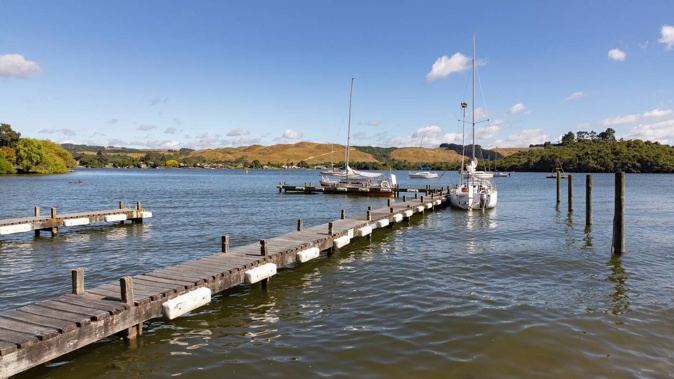
A health warning has been issued for Okawa Bay at Lake Rotoiti, in Rotorua, due to a bloom of “potentially toxic” blue-green algae, Toi Te Ora Public Health says.
People should avoid any activity that results in contact with the water, Toi Te Ora said in a Facebook post on Friday.
Algal blooms can develop rapidly and unpredictably and sometimes produce toxins that are harmful to people and animals, medical officer of health Dr Gregory Evans said in a media release in December.
“These blooms have the capacity to release toxins into the water which can cause skin rashes, stomach upsets and visual problems for anyone who has contact with the water,” Evans said.
“They can also affect the nervous system causing numbness, difficulty with breathing, and asthma attacks.”
/cloudfront-ap-southeast-2.images.arcpublishing.com/nzme/77IXYOUNMJAYVEUDQM4L3BBT5U.JPG)
Lakes were typically dominated by free-floating algal blooms, while rivers were more prone to algal blooms that grew in mats attached to rocks at the bottom. They could also build up at the shoreline.
“Algal mats and scum can build up along the edges of lakes or rivers. It’s important parents ensure children avoid contact with these as they may be toxic.”
Dogs were also at risk of “serious illness” if they consumed or had contact with toxic algae or algal mats that might accumulate in and around rivers.
They should be kept away from the water if it looks like there may be a bloom.
Lake Rotoiti also had a blue-green algae bloom last summer, including in Okawa Bay.
Last month, new signs warning lake users of toxic algal blooms were put up around 40 lakeside locations in the Rotorua district as rising outdoor temperatures increase the likelihood of cyanobacteria breakouts.
The Toi Te Ora website said there were active algal bloom health warnings for Lake Ōkaro near Waimungu, Lake Maraetai near Mangakino and Lake Ohakuri near Reporoa. The advice for all was to avoid recreational water contact.
It said some lakes in the Rotorua area – such as Lake Rotoehu, Lake Ōkaro and Lake Rotoiti – were prone to blooms of blue-green algae that may be toxic and harmful to health.
These lakes were monitored by the Bay of Plenty Regional Council from October to March and health warnings were issued by Toi Te Ora if test results show there is a bloom.
The Rotorua Daily Post reported algal blooms coloured Lake Rotoiti a vivid shade of green around March and April last year.
/cloudfront-ap-southeast-2.images.arcpublishing.com/nzme/3GJP6TUZUBBDJIWIVIIXAKBQT4.JPG)
Toi Moana Bay of Plenty Regional Council environmental scientist James Dare said at the time the green water was host to potentially toxic cyanobacteria, dominated by a species called Anabaena circinalis.
While it was hard to define exactly when blooms occurred, he said the most important factors were nutrient supply and climate.
“This year [2023] has seen a number of heavy rainfall events which have supplied a significant load of nutrients to the lake.”
Combined with warm and still weather, there were “perfect” conditions for growth.
Algal blooms: Look before you leap
It is always best to avoid contact with the lake water if it:
-Looks discoloured
-Has an unusual smell
-Has green or brown particles suspended in it
-Has visible surface scum.
If you think you’ve been in contact with an algal bloom:
-Have a shower and change your clothes as soon as you can, even if you don’t have any symptoms
-Seek medical advice from your GP if you become unwell after having contact with recreational water.
Source: Toi Te Ora Public Health website
Take your Radio, Podcasts and Music with you









